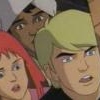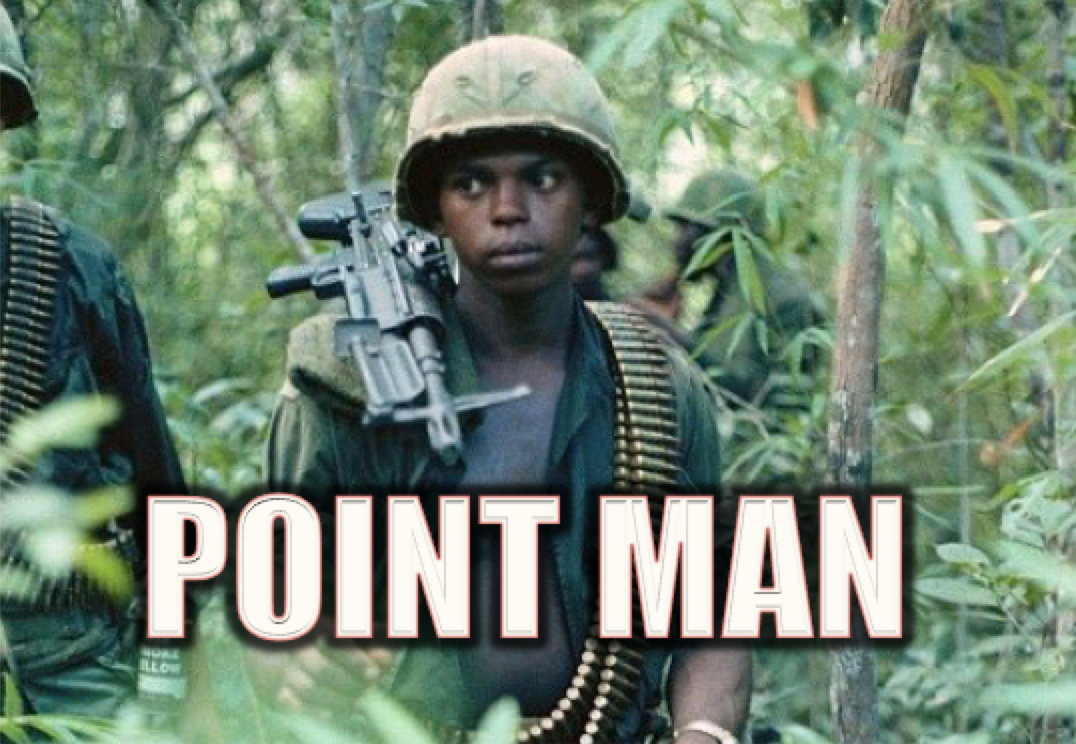-
Posts
39,005 -
Joined
-
Last visited
Content Type
Profiles
Huddle Wiki
Forums
Gallery
Everything posted by PhillyB
-

Official Panthers - Falcons Gameday Thread
PhillyB replied to Jeremy Igo's topic in Carolina Panthers
challenge and go for it if you lose -

Official Panthers - Falcons Gameday Thread
PhillyB replied to Jeremy Igo's topic in Carolina Panthers
get up teddy -
jeebus man i keep forgetting how insufferable it is when your football team is losing and the raging numbnuts wriggle out of the woodwork to post their insanely idiotic opinions
-
i get an almost pathological rush out of watching fans of playoff cusp teams get all excited before they play us and then see their hopes hurled off a cliff by midway through the second quarter
-
yeah i mean yamashiro just spent the last hour perusing wikipedia's list of all IJN ships ever commissioned and used during the war... so engrossing. i was wrong about the mutsu, it was the kongo that got down by a sub. also i had forgotten the shinano was actually originally laid down as the 3rd yamato class battleship but was ordered to be converted to a carrier once the four flat tops went down at midway
-
yeah i just scanned it and i see people saying "josh normal" and predicting 34-17 wins. because they beat the jags.
-
i'm glad i'm not the only one that geeks out about leyte gulf :) halsey took out the shokaku and a could destroyers iirc, which was significant, but japanese aircraft were virtually nonexistent at that point. none of IJN's task forces in the engagement had any kind of fighter cover. i remember halsey taking those battleships with him but i also remember the south dakota in particular going apeshit in a gun battle at some point... were they involved in the surigao strait prior to that? it's been years since i read about any of this edit: and didn't they sink the nagato? wasn't that like the only battleship to be sunk by another battleship in the entire PTO? double edit: IJN's night fighting and torpedo game was on point. if they could've pulled off more disruptive engagements like the solomons campaign they might've done some real damage... but by mid 1943 the u.s. had established enough airfields across the pacific (and carrier dominance) to strike japan just about anywhere. had guadalcanal happened a year later the IJN fleet would've stood no chance of getting anywhere near the slot without being bombed to oblivion in daylight (or torpedoed by the burgeoning USN sub ops en route.)
-
he died in a plane crash on a remote island in the northwest solomons called bougainville. i've been obsessed with visiting the wrecked of his transport bomber since i was a nerdy eight-year-old who read about his samauri sword never being found. i made it my life's goal to indiana jones that poo and find it.
-
yep. the japanese actually had us completely outclassed with carriers early on in the war. besides the shoho and the four that went down at midway, they had the shokaku and her sister ship, which iirc were the highest capacity carriers on the open sea in the world at the time. the loss at midway (of aircraft, premier pilots, and flattops) was something japan would never recover from. they lost virtually every naval engagement afterwards. and also ironically it was the USN's shitty-ass torpedo bomber runs that couldn't hit the broad side of a barn that allowed the success at midway, since it drew all the zeros down low and allowed the squadrons of dauntless dive-bombers unmolested access to the targets. also the yamato actually had a shot at doing something useful during leyte gulf. they had basically sneaked down a strait to samar island and on the third day of the largest naval battle in human history and were poised to blast into the bay and absolutely annihilate the precarious troop landings. it was the yamato, i think the nagato, and a shitload of cruisers and destroyers that made up the task force... basically unstoppable. the USN had a couple of shitty CVLs (light carriers) and some destroyers. but they launched the most ferocious and ballsy attack of the battle, flying fighters without ammunition straight at the enemy ships, buzzing their superstructures, dropping random poo at cruisers, destroyers laying smokescreens and then charging out of it for torpedo attacks, etc. the admiral leading it had already had a crusier torpedoed out from under him leading up to the battle and hadn't slept for three days and was basically like oh fug it's the main fleet! and turned tail and fled. it's likely he'd have gotten bombed to the bottom the next day anyway, but another couple nautical miles southwest and he'd have pulled off the biggest upset of the war and the yamato would've gone down as japan's most effective battleship in terms of kills.
-
actually i did a little digging on the origins of that show and i take back my comment. the yamato had become a symbol for japan herself, and the loss of the ship was representative in more ways than one of the empire's collapse. and as japan entered a new postwar era, under the boot of american-supervised reconstruction, they struggled for decades to develop a new national identity, something children could latch onto and carry into the future. that tv show was one such answer. they appropriated the yamato as a space ship in the future that went around saving the galaxy, helping legions of kids in japan's own baby boomer generation to latch onto a new globally-minded outlook, something that's very much reflected in today's japanese politics and culture. it's really pretty cool.
-
The original Death Star was a Japanese battleship called the Yamato. The year was 1937. Leadership councils in the Japanese Empire foresaw a war with America as their capacity for national self-sufficiency bled away, and they recognized that American shipyards could out-produce them if war were to break out. As a proactive measure, they decided to build the biggest, baddest, fastest, most heavily-armed warship ever created by man. Shrouded in secrecy from keel-laying to commission, the Yamato was nearly a fifth of a mile long, displaced over 70,000 tons fully loaded, and wielded nine 18.1" guns, making it the largest, longest, most heavily-armed naval ship in the history of the universe. It has since been reimagined as a giant-ass U.N. rocket ship for no good reason whatsoever. The Yamato was ready for war a week after the Japanese effectively declared it by bombing Pearl Harbor. She was built for one purpose and one purpose alone: to blast the hell out of columns of American battleships. Much like the previous century's military strategy had been dominated by legions of troops squaring off against one another in unprotected formations in the open field, naval strategies early on in the war were invariably composed of battleship lines: the archaic tactic of big guns slugging it out on the high seas. This approach followed hundreds of years of unassailed naval doctrine; wars were won by opposing surface fleets, and that was that. But then Pearl Harbor happened. Ironically, it was Japan's resounding success in striking the American naval base that ultimately did her in. The U.S. fleet had been so badly damaged that fleet maneuvers mere months later had to be made in the absence of a half-dozen premier battleships. Of course, any grand showdown in the open Pacific with the Imperial Japanese Navy would be suicide with the Arizona, West Virginia, California, and Nevada lying on the harbor floor or beached uselessly against its shores. If something was going to be done about the advancing Japanese, it was going to have to be done through unorthodox means. Like, say, the aircraft carrier. Numerical designator 10 signifies the number of people that thought these goddamn things would actually work. Prior to 1942, aircraft carriers were transports as much as anything, useful for stationing offshore as a strike platform on a place too distant for land-based attacks. It had never been considered as a tool of true naval warfare. Necessity is never more the mother of invention than in war, however, and circumstances thrust it into action in a new role. And suddenly, miraculously, the U.S. Navy found itself at the winning end of a watershed moment in the history of warfare: during the Battle of the Coral Sea, carrier-based bomber strikes successfully repelled a massive Japanese fleet, even sinking a Japanese carrier. Echoing through eternity is commander Robert Dixon's famous words: "Scratch one flat-top!" radioed to his squadron as the Shōhō went under. He had just unknowingly immortalized the ushering in of warfare's modern era. At that moment the complexion of the war changed. Three months later a fleet of American aircraft carriers launched long-range attacks against a Japanese force invading Midway Island. They sent four Japanese carriers plunging to the bottom with several waves of dive-bomber and torpedo-bomber attacks, repelling the invasion fleet a thousand miles from its objective. And the Yamato, class of the Imperial Japanese Navy, the baddest ship on the high seas, had been instantly rendered irrelevant. Her massive guns had been rendered obsolete in the unlikeliest of ways. She had gone from golden goose to sitting duck in the space of months. Kind of like the Atlanta Falcons! The year was 2008. Leadership councils in Atlanta foresaw an opportunity in the NFC South. With an aging roster, the Carolina Panthers' window was closing fast. The Buccaneers were coasting on the waning success of Jon Gruden and a no-name quarterback in a league evolving to leave them behind, and the New Orleans Saints, for all their offensive prowess, were a perennial disaster on the other side of the ball. As a proactive measure, the Falcons decided to draft a quarterback and assemble an offensive roster that would give him downfield weapons and a stalwart offensive line to build around. The result was 3rd overall pick Matt Ryan. Matt Ryan was quickly tabbed as a future NFL star (you could see it the moment he splashed that big advertisement deal with AirTran.) The first play of his career was a 67-yard bomb to Michael Jenkins for a touchdown. He put together a stellar rookie campaign and led his team to the playoffs with a rookie head coach (the first time a rookie head coach/quarterback combination accomplished such a feat since the Cleveland Rams did it in 1945.) Matt Ryan was the Yamato of the NFC South. The clear future, the meteoric talent, the juggernaut. He would dominate, he would bring victory. Like Pearl Harbor, the lockout torpedoed the Carolina Panthers and sent them crashing to the bottom; it was even an inside job, as many have accused Pearl Harbor of being, most notably outlined in the ironically-named Clausen Inquiry. And the Panthers, wounded, stripped of their talent, had to find some new way to win. If something was going to be done about the advancing Falcons, it was going to have to be done through unorthodox means. Like, say, drafting Cam Newton. Before 2011, quarterbacks didn't get to run and call themselves good quarterbacks at the same time. "Mobile quarterback" was a trope for "black and can't throw." The positional archetype was a Matt Ryan: tall, sturdy, committed to standing stalwart in the pocket and making efficient downfield throws, relying on hard work and familiarity with Xs and Os rather than premier athletic talent. But circumstances thrust a widely-criticized, mold-breaking, rough-edged quarterback who could attack defenses in ways never before encountered into a starting role with the Panthers; and, just as the jut of the Shōhō's bow from the frothing sea as she went under changed the landscape of naval warfare forever, Cam Newton's touchdown pass deep down the left sideline to Steve Smith announced to the world that a new force had arrived to the NFC South, a new power to be reckoned with. Nearly five full seasons from the moment of that first touchdown pass, the revolution of the Carolina Panthers is nearly complete. Cam Newton is the runaway MVP favorite. He'll cement it this week by taking on the Falcons. He'll do it, ironically, in an air raid. He'll do it against the Yamato of the NFC South, the new quarterback of the new team that was supposed to dominate and control it. In 1945 the Yamato met her end ignominiously, loaded with troops, like any common transport ship, and given orders for a suicide mission: to beach on Okinawa and use her massive guns in support of the defense until depleted or destroyed. Poetically, she was spotted by reconnaissance planes flown from aircraft carriers, bombed and torpedoed for two hours. Finally she capsized, blew up spectacularly, split in half, and, symbolic in more ways than one of the flagging Japanese war effort, sank to the bottom of the ocean forever. On Sunday the Falcons embrace their suicide mission. On Sunday they meet the force they inadvertently created. On Sunday they explode spectacularly, split in half, and plunge to the bottom of the NFC South. The Panthers advance to 15-0. Merry Christmas everyone! View full article
- 74 replies
-
- 111
-


